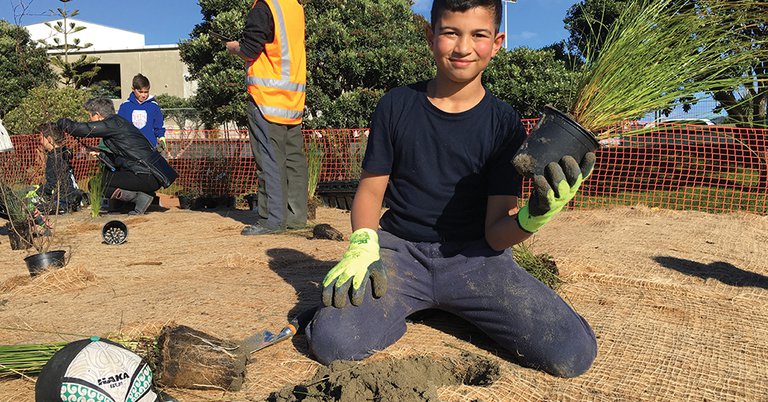


More than 25,000 plants will be put in the ground around Porirua’s streams, wetlands and harbour this year, as a big restoration and protection programme resumes.
After the country has moved back down through the alert levels and business-as-usual work has re-started, Council’s winter planting programme is under way.
Nigel Clarke, Porirua’s Senior Advisor Partnerships, Porirua Harbour and Catchments, says it is a relief to be able to kick the project back into gear after the lockdown.
"All over Porirua, near Te Awarua o Porirua Harbour, and around our streams and catchments, we’re restoring the health of our streams, and habitats where we can, by creating better shade and living areas for birds, plants and insects," he says.
Groups such as Sustainable Coastlines and Conservation Volunteers NZ are ready to go, Mr Clarke says, while Porirua schools are also keen to muck in and plant.
"There has always been a lot of community and school support for what we’re doing, and that will continue."
Mitchell Stream around the new Kenepuru Landing development will get attention this winter, along with Kakaho Estuary, Motukaraka Point and the Onepoto harbour’s edge near Pirate’s Cove.
Native plants such as carex, toetoe, lemonwood and mahoe will provide stream protection as stream sides are restored.
"Porirua is blessed with streams and rivers, and the programme we have with these specialised plants to go in will do things such as taking nitrates and phosphates out of the water, give shade to insects and hold stream banks together.
"Our community has said they want to look after our streams all over our city and we are keen to help," Mr Clarke says.
He says it is important that the community help this programme by also not littering, as harmful plastics can enter our waterways and then end up as microplastics which does huge damage to our sea life.
17 Jun 2020